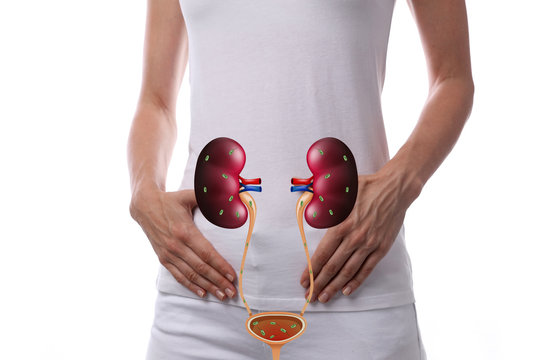
Long Covid
December 25, 2020
Study Sheds light on effectiveness of Mindfulness Meditation vs Headache Education for Migraine patients
January 11, 2021Positive attitudes and behavior patterns of societies can play a crucial role and can contribute to health, creativity, happiness and satisfaction among individuals; vice versa negative behavior patterns and practices among societies can have damaging effects on individuals.
Bullying behavior is a serious problem and can cause significant degree of social stress among all age groups. Studies have revealed that stressful life events can lead to onset of depression, anxiety and other mental and physical health problems.
Bullying is a deliberate misuse of power through repeated verbal, physical or social behavior that can cause physical, social, emotional and psychological harm.
Research data on the association between workplace bullying and health has only now begun to emerge. There is no precise or generally accepted definition of work place bullying, but most definitions refer to aspects such as the persistence of bullying and the negative and detrimental effects perceived by the victim e.g. situations in which someone is subjected to social isolation or exclusion; the subjects’ work and efforts are devalued; the subject is threatened and feels frustrated etc. Thus victimization to workplace bullying may represent a social stressor. Stress can contribute to the development of disease and can affect overall health status of an individual.
According to experts stress has been found to be an aetiological factor in development of cardiovascular disease as it causes chronic over activity or under activity of cardiovascular and metabolic systems of the body.
[Cardiovascular diseases (CVDs) are a group of disorders that involve heart and blood vessels. It usually occurs due to deposition of fat deposits in the blood vessels over time which affects the blood flow. Some of the examples are:
*Coronary heart disease which is disease of blood vessels supplying the heart muscles.
*Cerebrovascular disease which is the disease of blood vessels supplying the brain tissue.
*Congenital heart disease occurs due to malformations of heart structure existing at birth.
CVDs can be fatal and can lead to acute events like heart attacks and stroke which are life threatening situations and can also cause permanent disability.]
Furthermore, prolonged stress at work place may also contribute to development of psychiatric disorders such as depression and anxiety etc.
[Depression is a common and serious medical condition that can severely affect ones’ quality of life and ability to function. Some of its symptoms include feeling of sadness, loss of interest in activities once enjoyed, sleep disturbances, loss of appetite, weight loss or weight gain, fatigue, feeling worthless or guilty, suicidal thoughts etc. Anyone could be affected by depression. Some of the risk factors for the development of depression may include; continuous exposure to violence, neglect or abuse, family history, a personality with low self-esteem, disturbances in brain chemicals etc. Fortunately depression is a treatable ailment and most of the patients respond well to treatment.]
As hypothesized by health experts’ work place bullying represents a major chronic stressor and increases the victims’ vulnerability to stress related diseases. As this hypothesis needs to be proved through scientific methodology. Thus the researchers conducted studies among hospital employees to examine exposure to work place bullying as a risk factor for cardiovascular disease and depression.
The study data on prolonged exposure to bullying were based on two surveys over two years. The studies included 5432 participants (601 men and 4831 women), who were aged between 18 to 63 years and were working in Finnish hospitals. A postal questionnaire was sent to the participants to conduct the first survey during the year 1998. Respondents who were still working in the hospitals two years later were sent a follow-up questionnaire in the year 2000 i.e. during the second survey.
Moreover, the participants were divided into three exposure groups; one of the groups included employees who did not report bullying in first survey and in the second survey (the control group); the other group included employees who reported victimization either in the first survey or the second survey; the third group included victims of prolonged bullying i.e. those participants who reported bullying in both the surveys.
The surveys gathered information on bullying, stress related diseases; and behavioral risks on both occasions. Thus the outcomes of the studies were new reports of doctor diagnosed cardiovascular disease and depression among those participants who were free from these diseases at base line, during the two year follow-up.
The results of the studies have shown that the prevalence of bullying was 5% in the first survey and 6% in the second survey. Moreover, 2% of the participants reported bullying experiences in both the surveys which is indicative of prolonged bullying according to the researchers.
Researchers concluded that the studies have shown that there is a strong association between workplace bullying and subsequent depression and thus they have suggested that bullying is an aetiological factor for mental health problems.
Furthermore, the victims of bullying also seem to be at greater risk of developing cardiovascular disease, but this risk may partly be attributable to some of them being overweight. Scientists demand that future research is needed to confirm the strength of these associations. Thus the present findings have a clear implication for organizations and individuals; adverse effects of workplace bullying on mental health can be minimized by its early identification and prevention.
REFERENCE:
Workplace bullying and the risk of cardiovascular disease and depression






